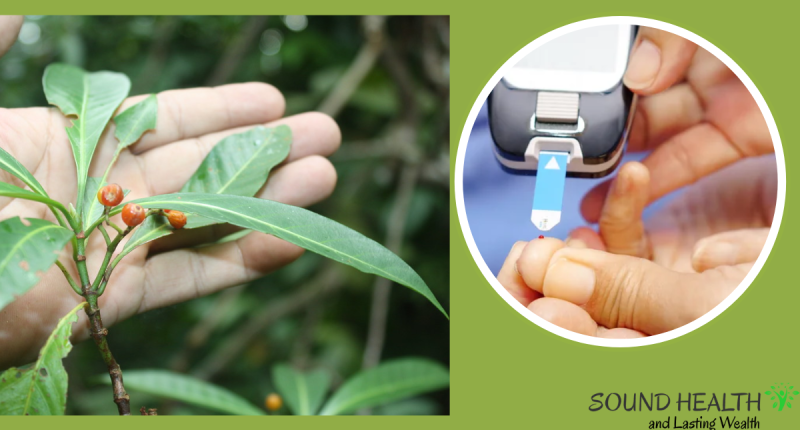While Psychotria malayana Jack leaf extract shows potential for managing diabetes with lower toxicity than other antidiabetic drugs, it’s not currently considered a cure for diabetes. Here’s why:
Promising research:
- Animal studies: Research in zebrafish models suggests the extract can reduce blood sugar levels effectively.
- In vitro studies: The extract exhibits alpha-glucosidase inhibitory activity, potentially delaying carbohydrate digestion and controlling blood sugar.
- Antioxidant properties: The extract’s antioxidant capabilities may offer additional benefits related to diabetes management.
- Lower toxicity: Compared to some existing antidiabetic medications, the extract appears less likely to cause severe side effects.
Limitations and unanswered questions:
- Limited human studies: Clinical trials are still in early stages, and more extensive research is needed to confirm efficacy and safety in humans.
- Dosage: Optimal dosage for therapeutic effects in humans remains unknown.
- Long-term effects: Potential long-term effects of the extract require further investigation.
- Interaction with other medications: How the extract interacts with existing medications used by diabetic patients is not fully understood.
Current status:
- Psychotria malayana Jack leaf extract is considered a promising candidate for managing diabetes.
- However, further research is crucial before it can be considered a cure.
- Consulting a healthcare professional before using this extract is highly recommended.
Note: Psychotria malayana Jack leaf extract shows potential as a complementary therapy for diabetes management due to its alpha-glucosidase inhibitory activity, antioxidant properties, and lower toxicity compared to some existing medications. However, it is not currently considered a cure, and more research is needed to fully understand its efficacy, safety, and optimal dosage in humans.
ALSO READ: Is the effects of high blood pressure on cognition preventable?
What is psychotria malayana Jack leaf extract?
Psychotria malayana Jack leaf extract is a natural product derived from the leaves of the Psychotria malayana Jack plant, also known as “meroyan sakat/salung” in Malaysia. This plant belongs to the Rubiaceae family and has been traditionally used for medicinal purposes and is believed to have amazing health benefits.
The bioactive compounds responsible for the extract’s potential benefits are still being investigated. However, a recent study has identified its usefulness for people with diabetes with reduced toxicity. Here’s everything to know about the new research
Highlights:
- Researchers successfully optimized Psychotria malayana Jack (P. malayana) leaf extract, enhancing its bioactivity and reducing its toxicity.
- The optimized extract (OE) exhibited potent α-glucosidase inhibition (AGI) activity, potentially slowing sugar absorption and aiding weight management.
- OE displayed significant antioxidant properties and inhibited soybean lipoxygenase-induced inflammation, indicating potential benefits for diabetes-related complications.
- OE showed lower toxicity than the previously studied methanol extract, suggesting it is a safer anti-diabetic candidate.
- The study identified several promising bioactive compounds in OE, including myo-inositol, isorhamnetin, and procyanidin B3, exhibiting all three beneficial properties (anti-diabetic, anti-inflammatory, and antioxidant).
- The researchers have applied for a patent for OE, paving the way for further research and potential development into a therapeutic agent for diabetes.
Background:
- P. malayana, traditionally used for treating wounds and skin infections, has garnered interest for its potential anti-diabetic properties.
- Previous studies revealed the efficacy of the plant’s methanol and water extracts in inhibiting α-glucosidase, a key enzyme involved in sugar digestion.
- The link between insulin resistance, inflammation, and diabetes highlights the need for multi-pronged therapeutic approaches.
This optimized extract, known as OE, demonstrated a number of beneficial properties:
- Effective α-glucosidase inhibition: OE efficiently prevented the absorption of disaccharides found in complex carbohydrates, potentially leading to improved blood sugar control.
- Dual action against adipogenesis and obesity: OE may contribute to weight loss by suppressing fat cell formation and reducing overall body fat.
- Antioxidant activity: OE demonstrated significant antioxidant capacity through various assays, indicating its ability to protect cells from oxidative damage.
- Anti-inflammatory activity: OE effectively inhibited soybean lipoxygenase-induced inflammation, suggesting its potential to combat inflammatory conditions linked to diabetes.
- Low toxicity: OE exhibited a higher lethal concentration compared to previous extracts, indicating a safer profile for medicinal use.
- Improved therapeutic index: OE showed a better balance between its therapeutic effects and potential side effects, making it more suitable for pharmaceutical development.
Additional key findings:
- The researchers identified several active compounds in OE, including butanedioic acid, propanoic acid, palmitic acid, and D-(−)-tagatose, which have previously shown potential beneficial effects in diabetes treatment.
- Other putative compounds detected in OE, such as myo-inositol, isorhamnetin, and procyanidin B3, demonstrated all three key bioactivities: anti-diabetic, anti-inflammatory, and antioxidant.
- The researchers have applied for a patent for their optimized extract and plan to conduct further research to isolate, identify, and quantify other potentially bioactive compounds.
- This study provides a promising foundation for conducting future preclinical and clinical trials to evaluate the efficacy and safety of OE as a potential anti-diabetic treatment.
Results:
- OE demonstrated superior AGI activity compared to the previously studied methanol extract.
- OE exhibited significant antioxidant activity through both DPPH and FRAP assays.
- OE displayed a lower lethal concentration (LC50) than the methanol extract, indicating reduced toxicity.
- Administration of OE in zebrafish embryos/larvae led to developmental retardation and malformations at higher concentrations.
- GC-MS and LC-MS analyses identified several potentially bioactive compounds in OE, some with established anti-diabetic, antioxidant, and anti-inflammatory properties.
In conclusion, this study provides compelling evidence for the potential of optimized P. malayana leaf extract as a natural anti-diabetic agent with additional antioxidant and anti-inflammatory properties. Further research and development offer promising prospects for improving diabetes management and mitigating its associated complications.
Continue to check our website soundhealthandlastingwealth.com for more articles of this kind. And, please use our comment section as well, we would love to hear from you.









